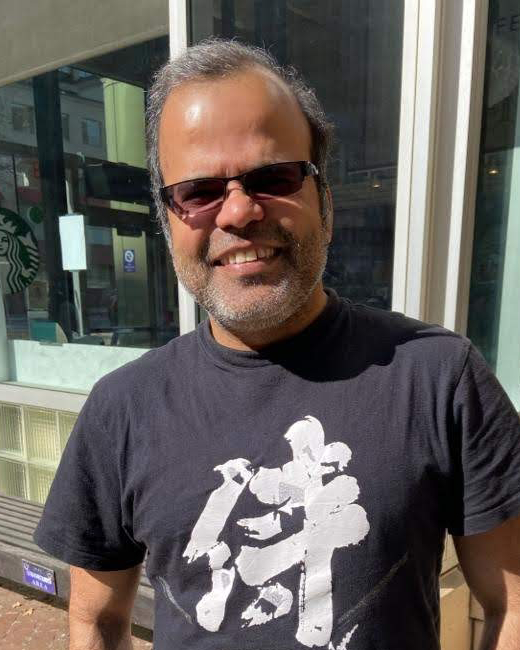
Parmit Singh, PhD
Parmit Singh, PhD, is a r esearch s cientist at the Department of Cancer Immunology and Virology within the Dana-Farber Cancer Institute, Harvard Medical School. Dr. Singh’s work supports HIV-1 integration research in the laboratory of Alan Engelman, PhD, Professor of Medicine.
Dr. Singh completed his postdoctoral fellowship in Dr. Henry Levin’s laboratory at NICHD from 2011-2016. During his postdoctoral training, he discovered a novel connection between HIV-1 integration and splicing. Specifically, he showed that HIV-1 prefers integration into genes with more introns and more alternative isoforms. Dr. Singh continues to refine the field, as he recently confirmed that speckle-associated and speckle-proximal chromatin (a speckle is an interchromatin structure enriched in splicing factors) serve as highly predictive markers for HIV-1 integration even in the absence of introns, a study that appeared February 14, 2022, in Cells.
Where did your interest in HIV integration research come from?
My postdoctoral work at NIH brought me to the field of HIV-1 research, specifically HIV-1 integration. My postdoctoral project was to understand HIV-1 preference for various genomic features. It was known that HIV-1 preferentially targets transcriptionally active genes, which constitute 30 percent of the human genome. My idea was that HIV-1 preference for some specific genes might be higher than the rest of the genes. This led me to find a novel connection between HIV-1 integration and cellular splicing machinery. These findings made me want to understand the mechanism of HIV-1 integration and site selection.
How did you find your way from NICHD postdoctoral work to your current position at Harvard?
During my time in Dr. Levin’s laboratory, I published two articles on HIV-1 integration sites, but I wanted to contribute more to the field. At the end of my postdoctoral training, I decided to move to a lab whose interest was aligned with HIV-1 integration research. One of my postdoctoral articles was published as a coauthor in collaboration with Dr. Alan Engelman’s laboratory at Harvard. Due to our mutual interest in HIV-1 integration, I wanted to join his laboratory. I discussed it with him at a conference, and luckily, I was offered a position.
Where do you seek mentorship in your current position, and what has been the most impactful piece of advice that you received from a mentor?
My current mentor is Dr. Alan Engelman. His critical comments on my writing style helped me to improve these skills. This led to two successful grant applications (a Harvard Center for AIDS Research (CFAR) Development award and a NIH CFAR Supplement award), and a first author research article. Similarly, his critical observations and suggestions help me to ensure proper controls within my experiments.
How do you find work-life balance in your career? Do you have any extracurricular activities that you enjoy?
I am a combination of poet, writer, and scientist. I have published three poetry books on Kindle, each consisting of 100 poems, in three different languages (English, Hindi, and Bhojpuri) along with my blogs. In Boston, I regularly participate in open mic and poetry slams.
Sometimes, I still struggle to balance this. I have not yet found the way to make it 50–50;I am a little biased with an inclination towards my work.
What activities/resources do you encourage current NICHD fellows to take advantage of while they’re still at NICHD?
I enjoyed my days at NICHD. I would advise fellows to attend conferences in their field of interest, as this helps you meet colleagues with whom you can further align along your journey. That’s how I met my current mentor. During my stay at NIH, I presented my work at the NIH Research Festival, an NCI meeting, plus various other local platforms and national meetings.
Do you have any final tips for fellows who are thinking about becoming research scientists?
If you enjoy bench work and like to discover even small-scale results, it’s good to be a research scientist in a lab. You should ask yourself where your interests are and look for good mentorship. I am lucky to have Dr. Engelman as my mentor, as he allows me to test innovative ideas in the laboratory.
